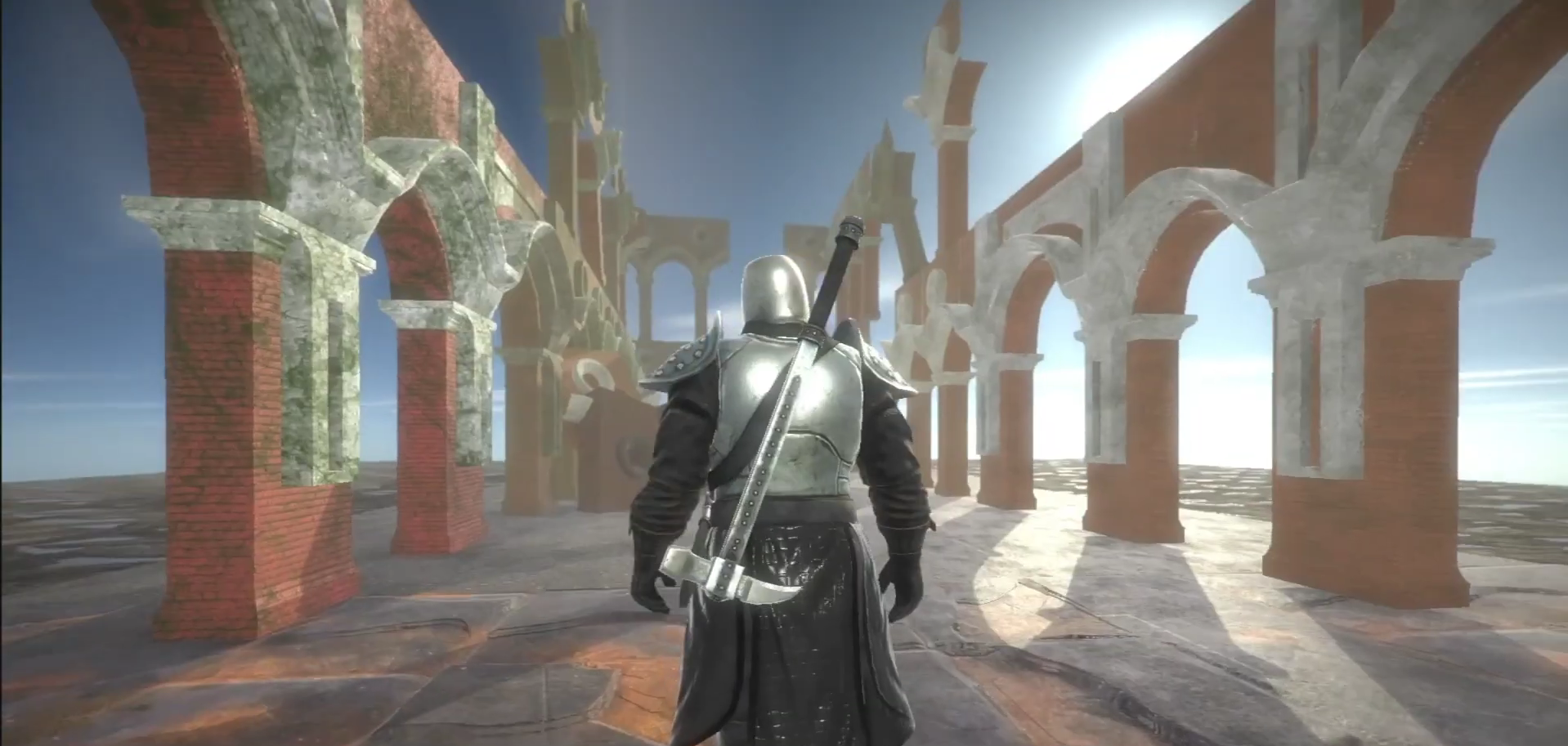My role: Motion Capture Artist
What I worked on: Motion capture, retargetting animation, programming third person animation controls for the player, all environment art
Completion time: 7 weeks
Software used: Autodesk Maya, Motionbuilder; Vicon Blade 3; Unity 5; Substance Painter, Designer
This was a project for a class in which I learnt motion capture.
The objective was to capture actors using a 16-camera motion-capture setup, using Vicon Blade 3, then clean the captured data and fix bone labelling and solving issues. The next step was to take the fixed data into Autodesk Motionbuilder and retarget the data on to the character rig. The final step was to take this retargetted animation into Unity and make an animation controller using mecanim’s state machine system.
Here’s an example of the original video shoot, alongside the same mocap data retargeted to a character:
Another side by side breakdown of the original shoot and retargeted animation:
Here’s the knight sword unsheathing animation implemented in Unity:
We were also supposed to 3D model and texture an environment for the characters. I used this part of the project as a way to learn a texturing tool I had always been interested in: Substance Designer, and it’s ability to generate procedural textures in Unity Engine itself. Additionally, I didn’t want to make just an environment with unique buildings, I wanted to make an environment with a set of one-three complex, but differently textured buildings. To achieve this, I modelled three different versions of parts of a building that was part of my high school. Then, I took these models into Substance Painter and textured them based on the real-world building.
Here are two of these modular pieces textured in Substance Painter:
Once this was done texturing, I took the substance painter texture files into Substance Designer, and started to work on the procedural texturing system. I did this using a set of input parameters that I could tweak to get exactly the look I wanted.
Three modified versions of the pillar shown above:
This allowed me to have 3 buildings that looked only slightly different physically, but because of the procedural texture generation that Substance Designer made possible, I could now generate infinite combinations of these three building parts.
I used a similar workflow to generate a procedural and tile-able ground dirt / rock / wet rock and tiles material – a single material that could be tweaked to look like I wanted it to look.
Here’s a few samples of this material being used in different ways:
Here’s an example of an animation from the culmination of all of this into a single Unity project:
I obtained the Knight model from the Unity Asset Store, and the Pirate model from www.mixamo.com .
